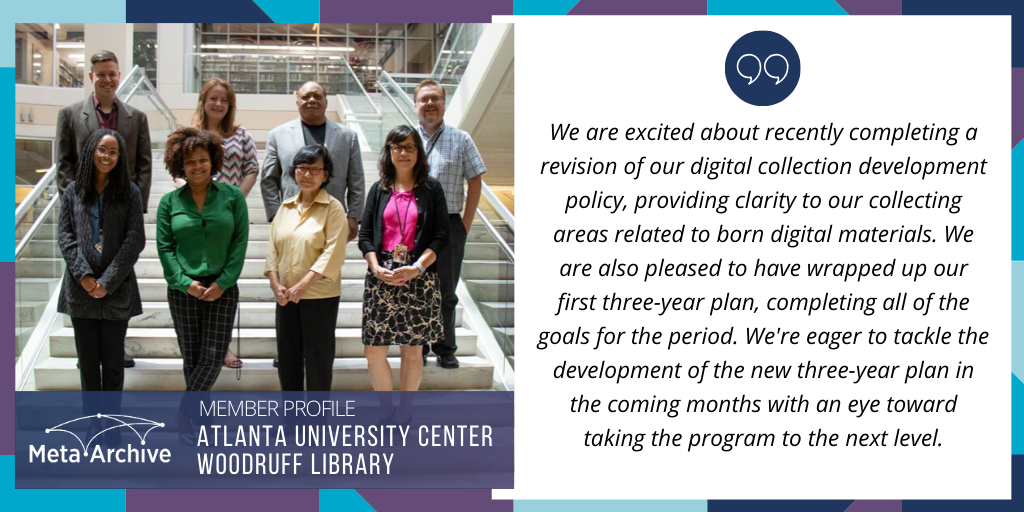MetaArchive Member Profile: Atlanta University Center Robert W. Woodruff Library
December 19, 2019
By: Josh Hogan on behalf of the Historically Black Colleges and University Library Alliance (HBCU LA)

Tell us a bit about the digital preservation program at your organization?
Since 2010, the Atlanta University Center (AUC) Woodruff Library has served as the technical lead and host of the LOCKSS server on behalf of the HBCU Library Alliance’s membership in the MetaArchive Cooperative. Digital preservation at the AUC Woodruff Library is implemented by the Digital Preservation Working Group (DPWG), a collaborative team with members from the Archives Research Center, the Digital Services Department, Records Management, and the IT Department. The DPWG is responsible for identifying, acquiring, and providing the means to preserve and ensure ongoing access to selected digital assets and associated metadata in accordance with AUC Woodruff Library’s collection development policies. For the past three years, we have pursued a three-year plan to develop our policies, workflows, and priorities.
Looking ahead, what are you excited about, or what’s on the horizon for your program?
We are excited about recently completing a revision of our digital collection development policy, providing clarity to our collecting areas related to born digital materials. We are also pleased to have wrapped up our first three-year plan, completing all of our goals for the period. We are eager to tackle the development of the new three-year plan in the coming months with an eye toward taking the program to the next level.

Pictured back row L-R: Cliff Landis, Jessica Leming, Robert Fallen, Josh Hogan. Front row L-R: Alex Dade, Aletha Carter, Suteera Apichatabutra, Christine Wiseman
Tell us a bit about your local workflow. How has the MetaArchive preservation storage service been incorporated?
Our local workflow identifies three broad categories of material to be preserved: born digital archival material, digitized archival material, and born digital institutional photographs and records. In addition to these categories, there are two tiers related to the priority of preserving the object or collection. The first tier objects are those of the highest priority, and these will be the ones that we will seek to ingest into robust preservation networks such as MetaArchive. Second tier objects and collections will be preserved in at least two different geographical areas and stored on Amazon Glacier.
Tell us about your experience in participating in the MetaArchive community. How has it influenced you or your work?
The AUC Woodruff Library has long participated in MetaArchive as a member of the HBCU Library Alliance. Most of the material we have ingested has been digitized copies of the founding documentation of the participating HBCUs, and we have been the host site of that initiative since 2008.
We recently participated in the SuperNode Pilot Project, playing the role of one of the ingesting institutions. This participation helped us ingest a significant portion of the digital material that we have identified as tier one, and it helped us evaluate the use of Exactly and OwnCloud as tools for use in our program. We hope that feedback provided to MetaArchive Steering Committee will be useful in determining the future path of this intiative that could reduce barriers to digital preservation for smaller institutions.